Instruction – Data Points of A Launch Monitor: Part 1
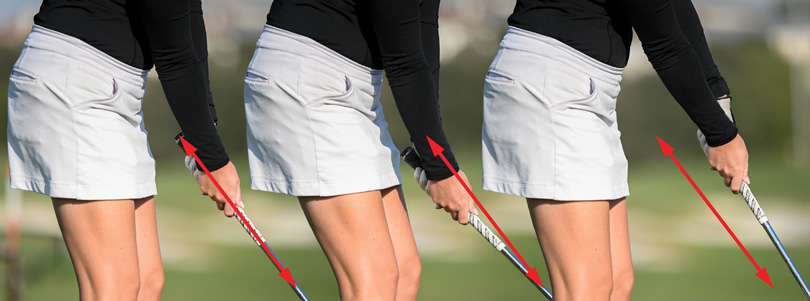
There are numerous indoor simulators popping up all over the world. I constantly hear students say how much they love the data but have no idea what the numbers and data points mean. In this article, I am going to cover the following data points: angle of attack and launch angle. In upcoming months, we will continue this discussion, but over different data points.
What does angle of attack mean?
Angle of attack is the vertical path your clubhead travels before impacting the golf ball. Angle of attack influences trajectory as well as spin of a shot, which affects distance and accuracy. A steeper angle of attack increases spin and creates a higher trajectory, while a shallower angle of attack decreases spin and creates a lower trajectory. For a shallower angle of attack, move the ball up in your stance (like you would when teeing up your drive). This allows the swing to flatten out, producing the low-spin trajectory that you want. Conversely, to achieve a steeper angle of attack, position the ball closer to your trail foot, which allows for a descending blow into the ball. For a shallow angle of attack, keep your weight evenly distributed throughout the swing. For a steeper angle of attack, have more weight shifted to your lead side all the way through impact.
When your clubhead has a shallower angle as it approaches the ball, this promotes a sweeping motion and is good for driver, fairway woods, hybrids, uphill lies and when the ball is sitting up in the rough. A steeper angle of attack is more important with short irons, punch shots, balls sitting down in the rough and hard pan lies.
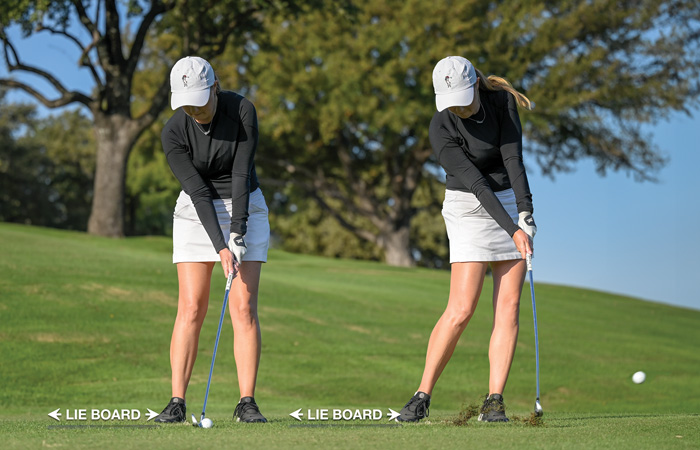
What is launch angle?
Launch Angle is the angle measured in degrees at which the ball leaves the clubface, relative to the ground. It is measured in the first few inches of flight, before gravity has had a chance to modify the path of the ball.
Here is a drill if you struggle having too shallow of an angle of attack. Place a towel, or anything behind your golf ball on your target line that is a half inch to one inch in thickness. Here, I used a lie board, but anything that is a half inch or one inch in thickness will work. Place your aid down six inches behind the golf ball and practice hitting shots without hitting the aid you placed behind your golf ball. I like students to practice hitting shots with no more than hip high to hip high-length swings, so they are not changing their club path on the start of their downswing.
Here is a drill if your angle of attack is too steep. Place a tee in the ground with the ball teed up in height to hit a driver. From here, hover your clubhead next to the ball teed up high and hit some shots, sweeping the ball off the tee with an iron without hitting the tee. If you hit the tee, that means your angle of attack is steep. If you don’t hit the tee, your angle of attack is shallow.
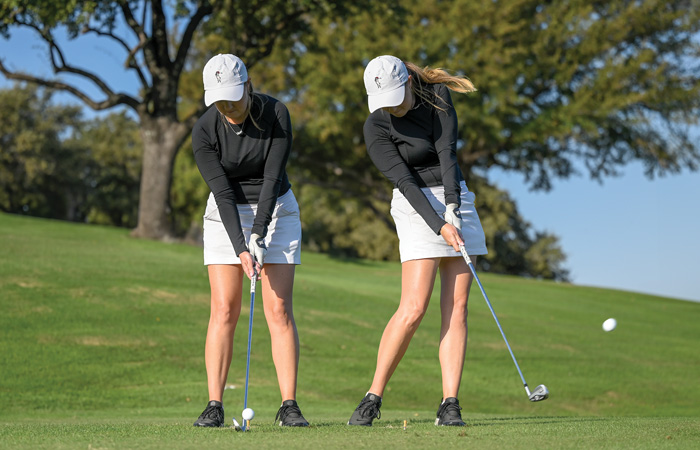
Drills that influence launch angle: this one is to promote a lower launch angle. For this shot, place a ball in line with the heel of your trail foot (right foot, for right-handed golfers). From here, have your hands slightly higher at address where the grip points above where it normally does at setup and have the grip pointing slightly toward your lead hip as well. From here, hit some shots with a swing in length, hip high to hip high, and practice finishing with the back of your lead hand flat and clubhead finishing lower to the ground after impact. One thing to pay attention to in the picture above is my hands finish in front of where they started, and my hands and grip are slightly in front of the clubhead at impact.
This drill promotes a higher launch angle and ball flight. Start with the ball position in front of where it normally is for that club (ex: ball position is normally in the middle of my stance with my six iron, for the shot I am placing the ball more toward my left foot at setup). From here, have the grip pointed slightly lower than normal at address and the grip pointing to the center of your sternum instead of toward your lead hip. From here, feel like the clubhead passes your hands through impact; this will create a higher ball flight.
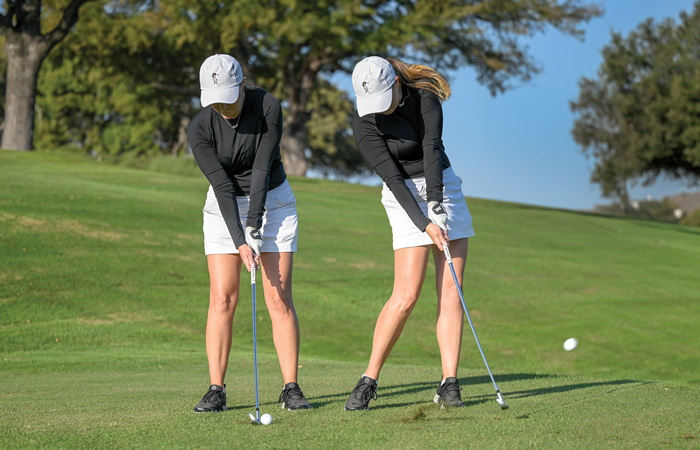
Where your grip points at setup will help determine the direction the ball goes, as well as trajectory. Typically, if the grip is higher than normal at setup, the ball will launch lower in trajectory and the ball will go more right in direction. Typically, if the grip is lower than usual at setup, the ball will launch higher in trajectory and go more left in direction.
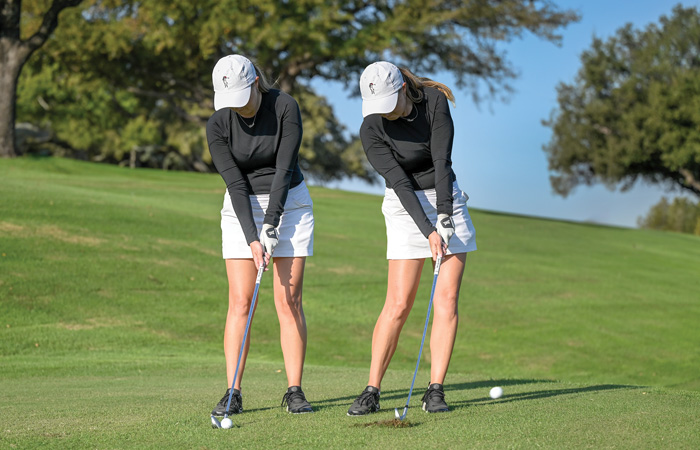
Being a PGA golf professional, I’m constantly looking for new training aids and technology to try.

Full disclosure: Full Swing launch monitors are not given to me and I am not paid to market for them. This year I went to a seminar for Full Swing golf launch monitors and tested the launch monitors against TrackMan. I was utterly shocked to find out the data they both pick up is equivalent to one another, yet the Full Swing Kit is less than half the price of TrackMan. I ended up purchasing a Full Swing Kit launch monitor myself and have loved it. I love sharing training aids and technology I love with others. If you or someone you know is looking to get a launch monitor, I would highly recommend the Full Swing Kit after spending a year with it. If you or someone you know would like to purchase one, reach out to me directly as I can get $550 off the retail price for you.
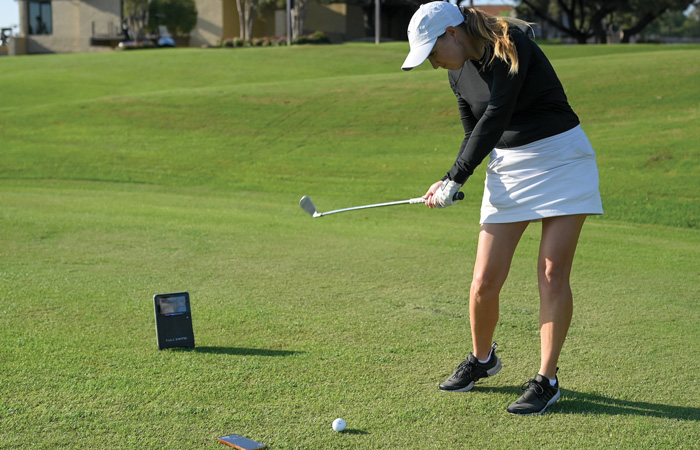
For more instruction tips, lesson programs, training aid discounts, or launch monitor discounts, reach out to me at 972-399-9040 by calling, texting or e-mailing kpikegolf@gmail.com.



